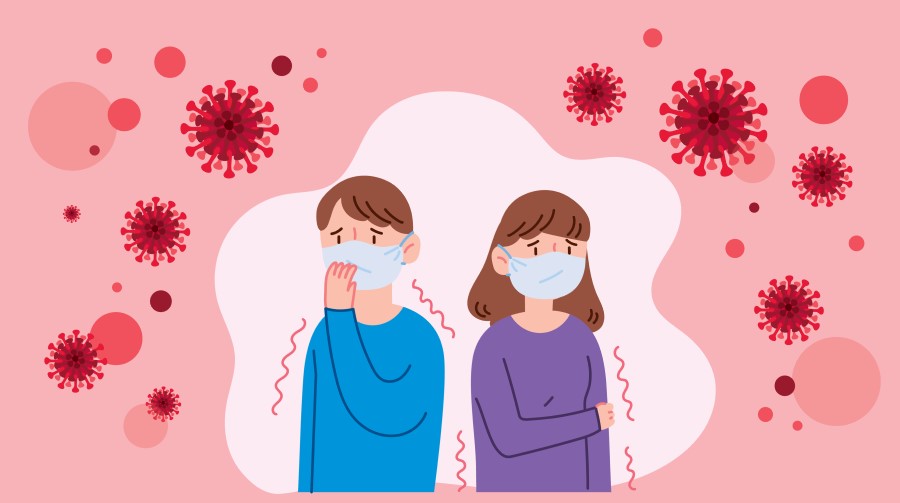How to support staff through the anxiety created by the COVID-19 pandemic

Some stress is good for us. It triggers a ‘fight or flight’ response which helps us act quickly under pressure. In this case, it means we’re more likely to act on health and hygiene warnings.
Anxiety however, can be just as contagious as a virus. We are social animals and it is important for us to pick up on how others are feeling. If one member of our group notices danger, it helps the group if others feel it too. Anxiety is conductive. It seeks to travel from one person to the next. The goal of anxiety is to be contagious and ensure everyone is anxious to ensure we’re all OK. However, chronic stress – staying in this heightened state of stress for too long – is unhealthy and has a negative impact on our physical and mental wellbeing.
So, what steps can employers take to help relieve symptoms of COVID-19 anxiety?
The first line of defence
Anxiety often stems from the unknown. Anxious employees repeatedly ask themselves ‘what if?’ and focus on problems before they’ve happened. The lack of any precedent for dealing with a global pandemic means often there are no answers – only uncertainty.
Sharing actionable steps on how to protect themselves and what to do if they feel unwell will help rationalise the issue.
Make sure company health protocols are clear and accessible. This means keeping staff informed on the steps you’re taking as a company and giving advice on how to stay hygienic and what to do if they’re feeling unwell.
Share the latest updates and health guidelines on the virus to keep employees in the loop, however, be careful about how often you’re sharing information. Key daily updates are fine, but employees shouldn’t be overwhelmed with distressing news updates, multiple times a day.
Stock the essentials
Make sure you’ve got the right supplies in place. Health guidelines state the importance of basic hygiene measures like washing hands regularly, using hand sanitiser and disposable hand towels.
Checking there are plenty of supplies for employees to use is the simplest way of helping relieve some of the worry, supporting staff in staying hygienic in a busy workplace.
Remote control
Much of the panic around COVID-19 stems from employees worrying about where they may encounter it. Where possible, make reasonable adjustments. These may include accommodating remote working and putting unnecessary travel on hold, particularly if cases become known in your area. This will become essential if known cases are announced in your company.
Successful remote working requires planning to avoid further distress. You may need to support employees in setting up a suitable home working environment, for example, providing a company laptop to relieve financial worries and ergonomic furniture to allow them to work comfortably from home.
Out of sight not out of mind
It is important for wellbeing and resilience to ensure connectivity for members of staff who are self-isolating. Remote workers face psychological hazards linked to loneliness and isolation. Risk assess for these and consider increased connectivity through, for example, the use of virtual water coolers, so teams can stay connected
Use reassuring language
Be aware of how your language can impact people’s perceptions of the situation. According to The Journal of Positive Psychology, diagnostic terms should be avoided when it comes to discussing health concerns.
For example, using terms like ‘cases’ and ‘victims’ reinforces negative connotations and can make employees even more stressed. Stick to the facts and avoid inflammatory language. Use phrases like ‘staff being treated for…’ instead, which have a more positive focus on recovery.
Additional support
Many employees are going to experience symptoms of distress and anxiety as the virus reaches its peak. In addition to being transparent about company policies, it’s important to provide employees with coping mechanisms.
Staff who continue to show signs of distress should be guided towards further emotional support. It may be that anxiety around coronavirus is a noticeable sign of pre-existing or wider emotional struggles.
In these cases, highlight existing workplace offerings like employee assistance programmes (EAPs) which offer direct, confidential contact with counsellors and mental health experts.
The author is Brendan Street, professional head of emotional wellbeing, Nuffield Health.
This article is provided by Nuffield Health.
Supplied by REBA Associate Member, Nuffield Health
Nuffield Health are the UK's largest healthcare charity & the market leader in corporate healthcare.







